A Letter From Uganda on #Kony2012
After a video about the Lord's Resistance Army became an international phenomenon, NGO communications officer Sara Weschler wrote this letter to share her perspective and set the record straight.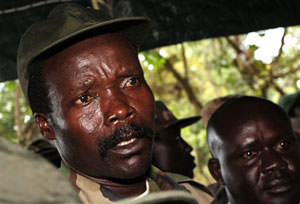
Sara Weschler lives in Gulu town, not far from where Joseph Kony was born. She has been involved with northern Uganda and the LRA issue since 2005, and moved to the region after college. She works as a communications officer for Information for Youth Empowerment Programme (www.IYEPuganda.org) — a small local NGO founded by LRA returnees and other war-affected youth to promote peace and post-conflict recovery. After a video about the Lord’s Resistance Army became an international phenomenon, Weschler wrote this letter to share her perspective and set the record straight.
I’m coming to all of this a bit late, I know. But it’s hard to respond to Internet phenomena in a timely manner when power supplies are cut almost every evening and you’re busy fighting off a fever. The fact that a ship in Mombasa harbor dropped its anchor on the region’s primary Internet cable two weeks back doesn’t help with connectivity either.
For starters, let me say this: As a viral campaign, #KONY2012 (or #StopKony) is simply astounding. Granted, I’m not the most Internet savvy member of my generation, but I honestly cannot think of a group or cause that has more successfully harnessed the power of Twitter, Facebook, YouTube and so forth. The question is, however, to what end?
From what I’ve seen on Twitter, the campaign has spawned two types of reactions. The first, and by far the more prevalent of the two, is fervent, unquestioning, self-satisfied (and self-righteous) support from people who know very little about the Lord’s Resistance Army [LRA] and who are, in many cases, hearing the name Joseph Kony for the first time. The second is of the seething, venomous backlash variety — people who have been involved with northern Uganda and the LRA for years, who are infuriated by the superficiality and sensationalism of this campaign and who basically want to rip the campaign’s creators, Invisible Children [IC], to shreds.
I am, of course, adamantly not in the first camp. But I’m going to try my best not to slip too far into the vitriol of the second. I’ve noticed that in the aid and advocacy world the cheapest way to make yourself feel good about your own work is to condemn the efforts of another. So while I feel a need to point out the inadequacies of this campaign, I will try to keep the IC bashing to a minimum. A number of commentators (Rosebell Kagumire, Mark Kersten, Angelo Izama, Tom Murphy, to name a few) have come out with measured, balanced responses, and I hope that I can manage to make my case in a similar vein.
The members of Invisible Children are by no means bad people. While the school sponsorship work they do in northern Uganda is neither unique in its method nor remarkable in its achievements, it is a perfectly decent, solid set of programs. Meanwhile, their contribution to the LRA Crisis Tracker and their work on early-response radio systems in South Sudan, the Central African Republic [CAR] and the Democratic Republic of the Congo [DRC] are extremely valuable. My problem with IC, though, is that it is more concerned with image than with substance, that it prioritizes creating the illusion of a momentous and world-changing movement over effecting actual positive changes on the ground, and that it propagates a narrative of Western saviors swooping in to rescue “Africa.” Its latest campaign and accompanying video, “StopKony/Kony2012,” are no exception.
The overarching claim of the movie (which, because I am in northern Uganda and it takes me three hours and eight tries to stream a 30 minute film, I have, admittedly, seen only once) is that there is an evil man somewhere out there in Central Africa. He has spent more than 25 years waging a brutal war for absolutely no reason, his army consists of 30,000 abducted children, and he cynically uses any attempts at peace talks or negotiation as an opportunity to rearm his troops and strengthen his power. The biggest problem is that no one knows about him. But if “we” spread the word and pressure the U.S. government to maintain military assistance to the Ugandan army, then by the end of this year “we” can capture Kony and end this horror.
Where do I even begin?
Misrepresentation of the Facts
The statistic cited for the number of children in Kony’s army comes from legitimate U.N. reports, and is in fact on the low end of estimates concerning LRA abductions (many sources put the number closer to 60,000). However, this count represents the total number of LRA abductees since the army’s inception in the mid-1980s. In its current state, the LRA is believed to consist of only a few hundred soldiers. This is not to say that it has ceased to be a threat. In the years since the Juba Peace Talks, the LRA has killed hundreds upon hundreds of civilians and forced the displacement of hundreds of thousands more. But the fact remains that the video distorts and sensationalizes the truth.
In addition, the claim that all attempts at peaceful negotiations have failed because of deceit on the part of the LRA is erroneous and one-sided. On several occasions — most notably at the end of the 1994 talks spearheaded by Betty Bigombe — it was unilateral acts of bad faith from the Yoweri Museveni regime that sabotaged the peace process.
Finally, we come to the central conceit of the #StopKony campaign: that the LRA continues to exist because it is utterly unknown; that spreading awareness is all it would take to put an end to this conflict.
Jan Egeland, former United Nations undersecretary-general for humanitarian affairs, once referred to the LRA conflict in northern Uganda as “the worst forgotten humanitarian crisis on Earth.” Such a statement would seem to corroborate IC’s assertion that “99 percent of people” in the world have no idea who Kony is. The problem is, Egeland made that assessment nearly a decade ago.
The claim might even have rang true as late as early 2005. But ever since July of that year, when Kony and four of his subordinate commanders became the targets of the first arrest warrants ever to be issued by the International Criminal Court, the LRA has been, if not a household name, at least a term well known to politicians and policymakers across the globe.
The sort of mass “awareness” that this campaign is now spreading does not serve to further an international understanding of this issue. Instead, it misleads people and leaves them with a dangerously convoluted impression of the LRA conflict and what it would take to end it.Oversimplification of the Present-Day Context
The morning after the launch of #KONY2012, I canvassed my local acquaintances for their impressions of the campaign. I spoke to the farmers who live next door, to a policeman taking his lunch break near my office, to a lecturer from Gulu University’s Peace and Conflict Studies program, to women in the market, to members of local peace-building NGOs and to friends at the cafe where I often hang out after work. Exactly two of the Acholis I talked to had even heard of the “movement.” These also happened to be the two people I know here with a computer in their home. And they had heard about #StopKony on Facebook. From American friends.
I live in Gulu, a town a mere 60 kilometers away from the village where Kony was born, a town that became famous for the night commuters so prominently featured in Invisible Children’s films. Fifteen years ago this was a besieged and isolated little corner of the map. Fifteen years ago, this town had been abandoned and forgotten by most of the outside world. But the same cannot be said today. Today, Gulu town is by far the most prosperous, developed and rehabilitated spot in the Acholi subregion. Many communities here have yet to recover from the crippling effects of the LRA conflict; you don’t bounce back overnight from two decades of war. But Gulu town is full of Internet cafes and its bus park is teeming with buses that travel from here to every major city in the country. Gulu is connected (albeit imperfectly) to the rest of the world. It is also the headquarters of Invisible Children’s Uganda operation.
If people here in Gulu haven’t heard of this campaign, I can assure you that no one in Kitgum or Pader, Amuru or Lamwo, is talking about it. Nor could the thousands of civilians living in displacement across South Sudan, DRC and CAR be particularly clued into the details of this program. It is strange that a group that claims to advocate for the needs and desires of the victims of this conflict has seen fit to develop a strategy without consulting the very people for whom it claims to speak.
Of course, had the architects of #KONY2012 opted to confer with people on the ground here in northern Uganda, they would probably have encountered some uncomfortable realities. As anyone working in this region (and in this I include Invisible Children) well knows, Acholiland is no longer in the grips of war. This April will mark six years since the last LRA attack on Ugandan soil. The problems here today are of a subtler, more complicated sort.
I first visited Gulu at a moment of great hope. During my initial stay in this area, the Juba Peace Talks turned 1 year old. A cease-fire had been in place for more than 14 months, and there was a palpable sense that true peace was just around the corner. When I came back in 2009, the talks had fallen through, and though the region was secure, I couldn’t help but think of the old line from Tacitus that tells us, “They made a desert and called it ‘peace.’ ” Infrastructure and public institutions throughout the Acholi districts had been devastated, tensions between returned combatants and local communities ran high, and after more than a decade in internment camps, families (or, in many cases, what was left of them) were trapped in a desperate struggle to resume the lives they had once known in their village homes.
A year and a half later, when I moved here in January 2011, I found a community that had in some ways stabilized. In many places, the future looked much brighter and more promising than what I’d remembered. “Slowly by slowly,” as they say here, Acholiland is recovering. Conditions, however, remain extremely precarious. Northern Uganda is no longer a “sexy” humanitarian crisis. Transition and peace building are harder to market than bringing aid to a war zone. They simply do not tug at donors’ heart (or purse) strings in quite the same way.
But all is not well here in northern Uganda. Stigma against LRA returnees continues to tear communities apart, driving many ex-combatants into isolation and destitution (the Gulu parish of Kasubi, for example, is home to more than 200 female LRA escapees who, having been rejected in their home villages, now scrape together a living by offering sexual services to soldiers stationed in nearby government barracks). Land disputes among returning internally displaced persons routinely spiral into violence, arson and even murder. Alcoholism, drug abuse and mental illness are at a national high in this part of the country. And during the past few years, in remote parts of the Acholi subregion, nodding disease, a previously unheard of illness, has attacked the brains of more than 3,000 children, leaving them physically and mentally debilitated, and thus far, on the road to certain death.
I could go on, but my point is this: “Getting” Kony is not at the top of most people’s to-do lists around here. In fact, as evidenced by debates surrounding the trial of former LRA Col. Thomas Kwoyelo, many Acholis are less interested in going after the rebels and far more concerned with the government extending the Amnesty Act (scheduled to lapse in May of this year) so that those abductees still out in the bush can feel safe defecting from the army’s ranks. Parents of abducted children, for instance, don’t want to see the rebels destroyed; they want to see them come home.
The Illusion of Military Intervention as Panacea
I may, however, be getting a bit sidetracked. A number of bloggers have in recent days made the case that the greatest flaw in the #KONY2012 video is that the narration leads viewers to believe the war is ongoing in Uganda itself. To be honest, I find this film less misleading on that particular point than many of IC’s earlier productions. And regardless of whether or not the movie distorts the realities of the LRA’s current location, the fact remains that the rebel group does continue to subject civilians in South Sudan, DRC and CAR to horrific dangers and brutality. My problem with the campaign lies much more with the “solution” it advocates, with its claim that all we need to end these atrocities is a military intervention under the guidance of U.S. forces.
The video seems to suggest that no action of this sort has ever before been taken. It quietly sidesteps the fact that prior to the deployment of the 100 U.S. special forces last autumn, the American government has had an unspecified number of troops from U.S. Africa Command (AFRICOM) stationed in Uganda for years. More significantly, a military strike of the sort that Invisible Children is advocating has already taken place.In late 2008, the Uganda People’s Defense Force (UPDF), Sudan People’s Liberation Army (SPLA) and the Forces Armées de la République Démocratique du Congo (FARDC) came together to strike a supposed final blow to the LRA in the DRC’s Garamba National Park. The operation, dubbed Lightning Thunder, was planned under the supervision of U.S. military advisers. And it was an unmitigated disaster.
For a number of reasons (not least of all because the operation was vociferously and boastfully discussed in the preceding weeks), Kony and his troops were aware of the attack well before it started. By the time airstrikes began, the LRA had almost entirely evacuated its bases in Garamba. In the month that followed, the rebels retaliated in spectacular fashion — not against the armies that launched Lightning Thunder, but against the civilians living in the areas affected by the operation. Over the course of four weeks, in a series of attacks loosely referred to as the Christmas Massacres, the Lord’s Resistance Army slaughtered more than 900 villagers in northeastern districts of the DRC. In addition, it abducted an estimated 700 civilians — about 500 of who are believed to have been children.
In light of this, the #StopKony campaign’s Dec. 31 deadline for military action is both utterly arbitrary and potentially dangerous. The U.S. is in an election season — a period when candidates running for office feel the greatest need to pander to voters. And while I would hope that politicians would put sound policy ahead of popular appeal, it is not inconceivable to me that, given enough (well-meaning but misguided) pressure from constituents, certain people in government may push for attacks without truly gauging all facets of the situation. Were this to happen, were a strike to occur before all the necessary preparations are in place, we may well find ourselves facing a repeat of 2008’s botched operation and ensuing loss of civilian lives.
Even putting all this aside, though, there is a fundamental flaw in the assumption that catching Kony would in and of itself bring an end to this conflict. At present, the LRA is scattered across three nations, with its highest-ranking officers strategically divided among the army’s various subgroups. If Kony were to be taken out of the equation, it is entirely likely that another senior commander — say, for example, Dominic Ongwen — could step into the void and fill his leadership position.
Moreover, the entire Kony-centric premise of this campaign ignores the fact that the history of extremist militant opposition in northern Uganda does not begin and end with Joseph Kony.
The Fallacy of the Senseless Rebellion
The #StopKony campaign plays into the all-too-popular and compelling myth that this is an utterly senseless war, that it has been waged for all these years by a band of madmen fighting without rhyme or reason. While it is true that the LRA of today fights primarily for its own survival, this was not always the case. The movement is horrendously violent and appallingly cruel, but it did not come out of nowhere. Any genuine understanding of the LRA conflict requires an analysis of Acholi marginalization throughout Ugandan history. While I will spare you the intricacies of British colonial policy in Acholiland, and the details of the Acholi ethnic group’s plight under Idi Amin, I do feel it necessary to give you an overview of the Acholi experience in recent times.
Like many countries on the African continent, Uganda is a nation of somewhat arbitrary borders. The Nile River, which originates in the southern district of Jinja, runs primarily east to west in this part of the world, effectively dividing the northern and southern portions of the country. Not surprisingly, the cultures on either side of this formidable physical boundary have developed very differently, with wildly disparate political structures, religions and (most significantly to my linguistically inclined mind) language families. While nearly all ethnic groups in the south speak Bantu languages (a subset of the Niger-Kordofanian family), northerners communicate almost exclusively in languages from the Nilo-Saharan family. This is no trivial distinction. To say that two languages come from separate language families is to say they have absolutely nothing in common. Phrased differently, languages such as the southern lingua franca Luganda have as little in common with a language like Acholi as English does with Chinese.
Such sociolinguistic differences were, if not fully appreciated and understood, certainly harnessed and exploited by the British colonial administration. Because certain Bantu groups of the south (most notably the Baganda) employed a centralized monarchic style of government, the British viewed these peoples as more advanced than the decentralized, clan-based polities north of the Nile. This perception influenced how the colonial “masters” governed the various groups under their control. Within the British system, southerners were promoted to posts of low-level civil service in governing institutions, while northerners were relegated to positions of unskilled labor or forced to serve as foot soldiers in British military units. As a result, the colony’s major urban, industrial and educational centers sprang up in the south, while the north remained isolated and underdeveloped. The trends set down under colonialism continued after independence and even up to the present day, contributing, among other things, to contemporary southern notions of northern backwardness and inferiority.
Post-independence, many northerners — and especially Acholis — discovered that the only careers open to them were those in the military. (Though the ethnic group’s presence and fortune in Ugandan armed forces fluctuated over the next two decades, I am choosing to skip past the Obote I and Idi Amin periods so as to address events in the country’s more recent past.)
Many people reading this ramble may not be aware that Museveni, who recently completed his 26th year as president of Uganda, himself began as the commander of a rebel movement. Known as the National Resistance Army (NRA), Museveni’s militia took to the Ugandan bush in 1981 after a fiercely contested national election reinstated Milton Obote as the country’s president.
As a member of the Ankole tribe, a fairly small and politically insignificant ethnic group from the extreme southwestern corner of Uganda, Museveni did not immediately enjoy popular recognition or support. Tucked against the Rwandan border, Banyankole were often dismissed as faux Ugandans — Banyarwanda at heart. This image was further reinforced by the fact that a sizable portion of Museveni’s troops were indeed Rwandan Tutsi refugees who had entered Uganda in the 1960s. (This contingent incidentally included Paul Kagame, current president of Rwanda. The layers and knots in this story simply do not end!)Museveni’s tactical stroke of genius was to unify disparate Bantu groups by championing a southern identity. To hear him tell it, it did not matter whether one was Muganda or Mugisu, Musoga or Munyankole. What mattered was that all these groups were southerners, and that they had to unify against the tyranny of the savage north — of a Langi president and his (largely, though by no means entirely) Acholi army.
This message was given credence throughout the early ’80s by a series of grisly massacres carried out by Obote’s forces in a region known as the Luwero Triangle. To this day, many southerners look back on these events as proof that the Acholi are an inherently violent and bloodthirsty people. “The only good Acholi,” I’ve been told on more than one occasion in Kampala, “is a dead Acholi.”
I will not detail the succession of power during the years of the so-called bush war. Suffice it to say that by the time Museveni and the NRA captured Kampala, the presidency was in fact held by an Acholi named Tito Okello. As soon as Okello capitulated to Museveni, northerners in what had up to that point been the national army took flight. Fearing retribution from the new southern-dominated regime, many Acholi soldiers fled past their home territories and all the way into Sudan.
Whether Museveni genuinely feared a northern rebellion, or simply wished to exact revenge on his Nilotic opponents, is a matter open to debate. The fact is, however, that he sent his National Resistance Army in pursuit of the previous regime’s fleeing soldiers, instructing them to quash any opposition movements in the country’s northern regions.
Once in the north, the NRA came down on civilian Acholi populations with astonishing force, in many cases committing indiscriminant acts of torture, rape and even murder. An Acholi friend of mine who was a young child when Museveni took power once told me that during this period, the very sight of “light skin” (southerners are generally fairer than Acholis) used to send him into a panic. Terrorized by these developments, many Acholis began to actively turn against the new government. As the esteemed LRA scholar Adam Branch once put it, it was Museveni’s counterinsurgency that gave rise to a real insurgency in Acholiland.
The mid-80s saw the birth of several Acholi resistance groups, many of which have now faded into obscurity. Strongest among these was a militia known as the Holy Spirit Mobile Forces (HSMF). Led by a young woman who called herself Alice Lakwena, the group blended spirituality and militarism and attained a remarkable level of support and success in the early months of its existence. When a former altar boy by the name of Joseph Kony came to Lakwena claiming to commune with the same spirits who possessed her, the two mediums clashed. Kony was dismissed by Lakwena’s followers and withdrew with a small and insignificant group of his own devotees.
It was not until late 1987, when the HSMF was decimated at Jinja and Lakwena fled to a refugee camp in Kenya, that Kony began to be taken seriously in the Acholi region. Thus, the defeat of one extremist leader paved the way for the rise of another.
Does this mean that today, among the Acholi, there is another Kony or Lakwena waiting somewhere in the wings, ready to take the stage if the LRA is ever defeated? I wouldn’t go that far.
But I will say this: Although northern Uganda is relatively safe these days, the fundamental tensions between north and south, the history of oppression and mistrust, and the marginalization of this part of the country have not been resolved. If anything, all these were only exacerbated by the two decades of conflict in this region. And until the core issues at the heart of this situation are addressed, no one here can truly rest easy.
The Myth of the Good Guy
In its fairy tale depiction of this conflict, Invisible Children asks us to believe that this is a fight between good and evil. While we can safely grant it that Kony is “the bad guy” in this story, we should be careful accepting the claim that the Ugandan government and army represent the forces of good. The assumption that Museveni and the UPDF have always sought to end the LRA insurgency ignores a dizzying array of critical factors in this conflict.
To begin with, the conflict affected only specific portions of the country — all of them in the Nilotic districts — far from Kampala or any other area where Museveni enjoys mass popular support. At the height of the war, it was possible to go through daily life in southern Uganda without ever realizing there was a war in the north of the country. Put quite bluntly, the violence affected a group the ruling party didn’t care about anyway. This is not to say that Museveni did not deploy troops to fight the LRA; he most certainly did. His intentions, however, were always murky at best.
In the nearly 50 years since independence, Uganda has had nine presidents. Two of these lasted less than six months in office. Of the remaining seven, one was removed by a military commission and four were ousted through direct military action (with Obote garnering the dubious distinction of being deposed by not one, but two military coups, 14 years apart). In a country in which the armed forces have played such a key role in transitions of power, is it so hard to imagine that the sitting president would want his army kept as busy and as far away from the capital as possible?
The war in the north provided Museveni with the pretext for an outrageous defense budget (often at the expense of other services in the country). Furthermore, in 2004, when the Bush administration placed the Lord’s Resistance Army on the list of terrorist organizations to be defeated in the war on terror, the LRA became a source of funding for the Museveni government. To make a long story short, throughout the history of this conflict, it has been more profitable for Museveni and the UPDF to continue fighting Kony than to actually put an end to his activity.
During this period, defense of civilians has always ranked abysmally low on the list of government priorities. In 1996, the UPDF began a campaign of coerced resettlement into Internally Displaced Persons camps in the north. Nearly 90 percent of the Acholi population was ultimately driven from their homes and interned against their will. Ostensibly established for the population’s protection, the camps soon developed into a form of imprisonment. Now dominated by southerners, the national army had little compassion or concern for its northern compatriots’ suffering. In times of LRA attack, UPDF guards would often abandon their posts altogether, leaving the civilians within the camps vulnerable to massacres and abduction. Furthermore, on a day-to-day basis, the camps’ inhabitants lived in alarmingly poor conditions. At one point in the early 2000s, a humanitarian report demonstrated that more than 1,000 people were dying every week of preventable causes.The UPDF’s crimes, however, were not limited to sins of omission: It is now widely acknowledged that the army engaged in widespread acts of rape, torture and murder within the camps, and a number of sources even allege the use of rape as a tool for the willful spread of HIV/AIDS among the Acholi community. Many Acholis will tell you that it was often a tossup whom they feared more at any given moment during the war. The LRA and the UPDF could strike equal measures of terror in the hearts of civilians.
Although the UPDF’s crimes against Acholis are, for the most part, now a thing of the past, the army’s brutality toward noncombatants continues in other regions. The Ugandan troops deployed today to hunt Kony throughout Central Africa are routinely accused of looting, torture and rape against civilian populations.
While it’s comfortable and appealing to divide the world into bad guys and good guys, the sad truth is that not every conflict cleaves easily along lines of good and evil. Though the crimes of the LRA outweigh those of the UPDF, we should still think twice before throwing in our lot with Uganda’s national army.
If you’re looking for heroes in this story, you need to come away from the battlefields and front lines. The true good guys in all this are the local activists and peace workers in LRA-affected communities, civilians who have experienced this conflict firsthand and who are working to rehabilitate the region and keep avenues open for a peaceful resolution.
A View From Gulu, One Week Into #KONY2012
Last Sunday evening as I struggled to wrap this email up in some reasonable fashion, I was visited by a friend of mine — let’s call him Isaiah. It was good timing, actually, because I’d meant to talk to this friend about #StopKony for a couple of days now. Isaiah, you see, is in a particularly strong position to comment on matters pertaining to the LRA: He spent nearly a decade as an officer in its ranks, and he used to know Kony personally.
By now, #KONY2012 has been making the rounds for nearly a week. It has made the news in Uganda and, yes, a fair number of people are talking about it, even here. So when I dropped the phrase to Isaiah, he immediately started to laugh. “Ah,” he told me, “that thing is all for money.”
“What do you think the impact will be?” I asked him.
“Well for now,” he said, “a lot of fear.”
“Fear?”
“Yes, fear! You know,” he began to elaborate, “this thing is now in newspapers and showing on [Kenyan broadcast station] NTV, but not everyone speaks such good English. Some people see Kony2012 and they think it is meaning Kony will be back in Uganda in 2012.”
I must have given him a rather dubious look because he suddenly became very animated.
“No, Sara,” he insisted, “You come to my house right now. You first talk to my neighbors. It is what they are saying! For me I can laugh it off, but some people are truly scared. This is how rumors start, and people still live in fear even though it’s been many years now since the rebels were in Gulu.”
“What do you think Kony’s reaction would be if he heard about it?” I asked.
“If he heard about it? For certain, he already knows.”
“How?”
“He has his ways. He always has.”
I asked whether Kony might take the campaign as a taunt, whether it might inadvertently spur him to more violence.
“Absolutely,” Isaiah answered. “Sara, do you know why the LRA did the Barlonyo killings?” he asked, referring to one of the most brutal massacres in LRA history. “It was revenge. Some few days before, we were attacked by UPDF gunships. Kony was furious. He wasn’t there, but he sent the order to retaliate — by killing those in Barlonyo IDP camp.”
“So like the response to Lightning Thunder, more or less,” I suggested.
“Ah, no,” said Isaiah, “For Lightning Thunder, I was not with them. I cannot tell you about that one. But for Barlonyo, I was there when the decision came. That is my experience. That is what I can speak from. When Kony feels challenged, Kony takes revenge. You tell those you are writing to that that’s what I know.”
“Do you think a negotiated peace is still an option?” I asked.
“It is the only way. He is now in CAR, now in DRC, now South Sudan. They’ll never catch him. He is ever moving; he knows how to keep running. This can only end if they try to talk. But you know, with Kony it is a process. You must first win his trust. It takes long and you must wait. And that patience … I think it is now not there.”
“So then do you think anything good can come from this?”
Isaiah paused to mull the question over in his head. “Ah, no,” he said at last. “For me, I do not think so.”
Oddly enough, a week into this media storm, I’m feeling more hopeful than Isaiah. As Yale political science professor Christopher Blattman pointed out in a post on his website, “The big story has shifted from viral video to the oversimplification of complicated issues, the accuracy of advocacy and the white savior complex in aid. Really. Newspapers are taking a nuanced view of aid and advocacy. This is big.” I think he’s on to something there. While thousands initially rushed to offer #StopKony their gushing and unquestioning support, many are now taking a step back and trying to grasp the complexities of this situation. People who have never before looked into the history of northern Uganda or the LRA conflict are suddenly doing research. They are looking for constructive ways to offer their support to the region, and learning that local groups on the ground have been doing remarkable work for years with astonishingly little in the way of resources.
Almost in spite of itself, IC may actually have brought about a genuine degree of awareness and understanding. If the attention can be maintained, it is possible that the international community may yet involve itself in constructive ways.
Be well,
Sara
Your support matters…
Independent journalism is under threat and overshadowed by heavily funded mainstream media.
You can help level the playing field. Become a member.
Your tax-deductible contribution keeps us digging beneath the headlines to give you thought-provoking, investigative reporting and analysis that unearths what's really happening- without compromise.
Give today to support our courageous, independent journalists.
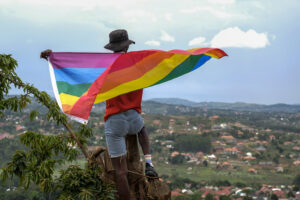
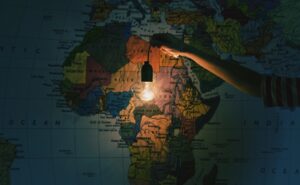
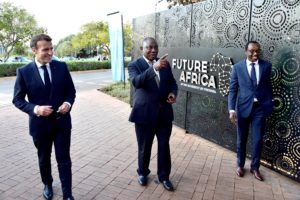
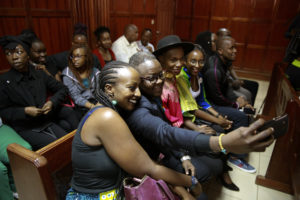
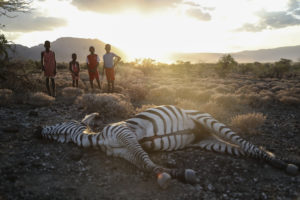
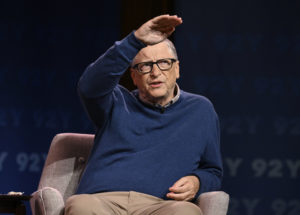
You need to be a supporter to comment.
There are currently no responses to this article.
Be the first to respond.